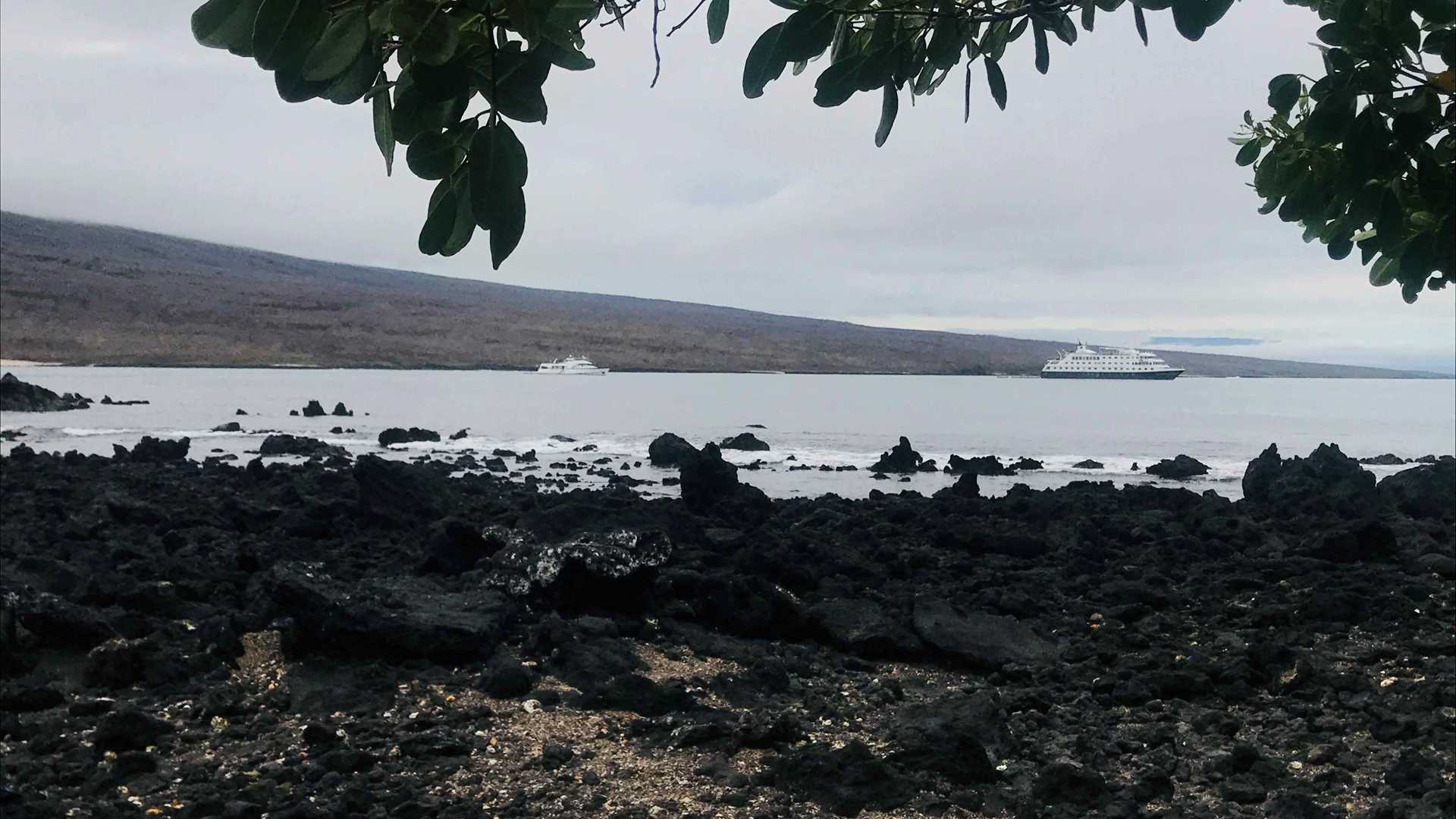Today was an incredible day of activity and movement! As Grosvenor Teacher Fellows, we began the day by embarking on a long hike in Urbina Bay on the Isabella Island of the Galapagos. Immediately upon our wet landing, our naturalist, Anahi, spotted a majestic Galapagos hawk posing for its visitors on a large log pillar along the white, sandy beach. Hidden in plain sight, marine iguanas camouflaged into the black, volcanic, basaltic rock. We had to utilize our biomimicry skills of scrambling over the jagged rocks like hermit crabs. After braving the rock climb, we descended into a lush, yet spiky terrain including the scutia shrub and the poison apple tree. In a quest to satisfy our competitive natures, we embarked on a friendly, but very serious game to sight more brightly colored land iguanas than our neighboring naturalist Jose’s group. In case you are wondering, we won! Also, not only did we see land iguanas, we had our first encounter with the Alcedo Volcano giant tortoise. After our hike, we enjoyed a local Ecuadorian lunch including yuca, white papaya, sweet cucumber, ceviche, sweet potato, and our favorite, tres leches. It is obvious that Lindblad Expeditions is committed to sustainability and to highlighting the incredible cuisine of this diverse region.
After lunch, we led an activity for the Global Explorers and had a lot of fun with them. We also went deep-water snorkeling, in an area that was teeming with penguins. There is nothing more magical than witnessing the torpedo-like flurry of activity of the Galapagos penguins. It is not uncommon to see sea lions, marine iguanas, sea turtles, Galapagos penguins, and a bright assortment of diverse fish all within a few minutes! Seeing all of the wildlife beauty has reinvigorated our commitment to teach our students how to become environmental stewards for our planet. After the snorkeling experience, we completed our second hike of the day at Tagus Cove. This was a fast-paced hike to the top rim of Darwin Lake. The views were breathtaking. Before finishing our daily expedition, we viewed artifacts left by explorers dated back to the years of Darwin’s expeditions. It is assuring to think that these islands have changed very little since the age of Darwin.






